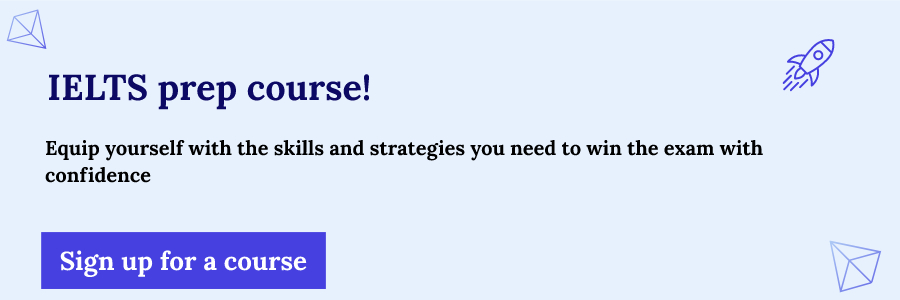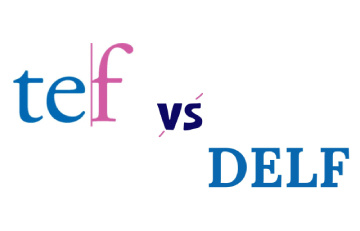
The International English Language Testing System (IELTS) is a globally recognized standardized test designed to assess the English language proficiency of non-native English speakers. It is commonly used for academic and immigration purposes, particularly for those seeking to study or work in English-speaking countries like the UK, Australia, Canada, and New Zealand. IELTS measures the test-taker’s ability to listen, read, write, and speak in English, and it is administered by British Council, IDP: IELTS Australia, and Cambridge Assessment English.
The main versions of the test:
- IELTS Academic test – designed for applicants to universities and other higher education institutions, as well as for professional registration;
- IELTS General Training test – typically used for immigration, employment and secondary education;
- IELTS Life Skills – an English language test to confirm speaking and listening skills when applying for a UK visa.
IELTS Academic test
The primary objective of the IELTS Academic examination lies in evaluating the linguistic proficiency of individuals aspiring for enrollment in undergraduate or postgraduate programs within universities that conduct instruction in English. Diverging from its counterpart, the IELTS General Training assessment, which prioritizes everyday communication skills, the Academic variant integrates vocabulary commonly encountered within academic settings. Moreover, this version may also encompass terminology necessary for professional registration, such as those pertinent to medical or legal fields.
Comprising four distinct sections, each targeting a specific language skill, the examination unfolds as follows:
Listening
This section unfolds in four segments, each comprising ten questions.
Parts 1 and 2 delve into commonplace social scenarios (e.g., leisure activities, local attractions).
Parts 3 and 4 pivot towards educational contexts.
In Parts 1 and 3, dialogues transpire between two principal speakers, while in Parts 2 and 4, solitary speakers take the forefront.
Recordings are played only once, featuring a spectrum of accents encompassing British, Australian, New Zealand, and North American variations.
Question Types:
Multiple Choice: This format may entail a question with three potential answers or the opening segment of a sentence with three possible endings. It evaluates various listening skills, including a nuanced grasp of specific details or a broader understanding of the recording’s main themes.
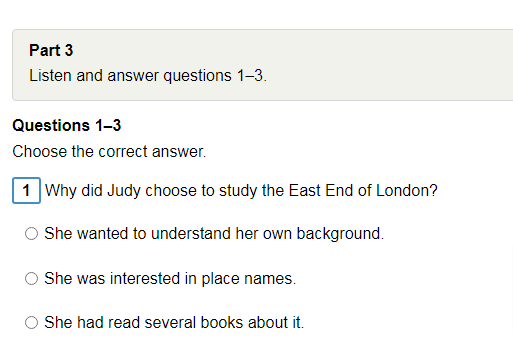
- Matching: This question type requires aligning items from the recording with corresponding choices on the question sheet and marking the appropriate letter on the answer sheet. It assesses your aptitude for comprehending detailed information, tracking conversations between speakers, and discerning connections within the recording.

- Plan/Map/Diagram Labelling: Participants must complete labels on a visual representation provided. This test evaluates your capacity to interpret descriptions of locations and their correlation with the visual aid. Additionally, it may gauge your ability to comprehend directions and spatial relationships within the recording.

- Form/Note/Table/Flow Chart/Summary Completion: Test-takers are tasked with filling in gaps within an outline derived from part or all of the recording. This question type emphasizes capturing the key points one would naturally jot down while listening.
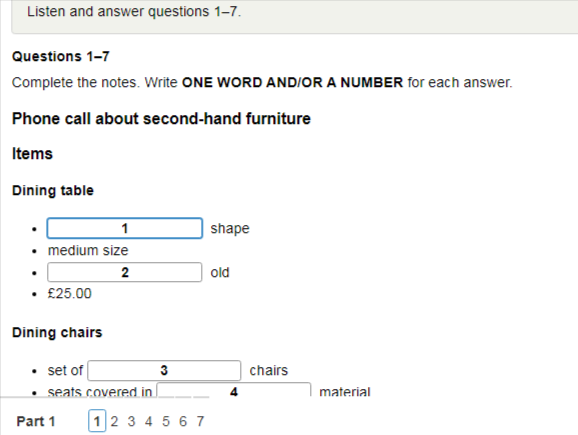
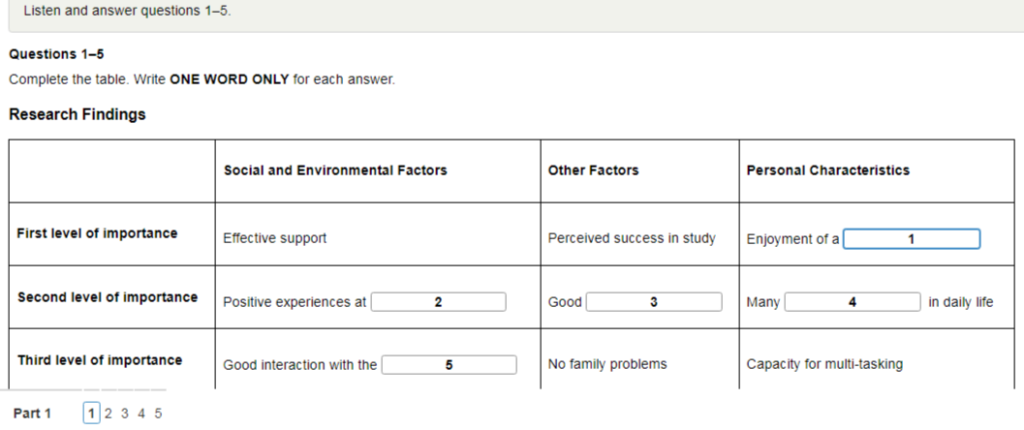
Sentence Completion: Participants must fill in gaps within sentences using information gleaned from the recording. This assessment focuses on your capability to identify crucial details within the audio and discern relationships between ideas, facts, or events, such as cause and effect.

- Short-Answer Questions: Test-takers read a question and provide concise responses using information extracted from the recording. This question type hones in on your ability to extract factual details, such as locations, prices, or times, from the audio.

Academic Reading
The passages featured in this segment are sourced from various materials like books, journals, newspapers, and online platforms, intended for a general audience. Catering to the interests of undergraduate and graduate students, the topics span a wide array of subjects. The styles of writing may vary, encompassing narrative, descriptive, or discursive/argumentative approaches. Additionally, the texts may incorporate charts, graphs, or illustrations to convey information effectively.
Types of question:
- Multiple Choice: Candidates encounter questions with four potential answers or the first half of a sentence with four possible endings. This format evaluates diverse reading skills, including a detailed comprehension of specific points or a broader understanding of the text’s main themes.

- Identifying Information (True/False/Not Given): Participants must determine whether given statements align with information presented in the text, testing their ability to recognize specific details within the passage.
- Identifying Writer’s Views/Claims (Yes/No/Not Given): Test-takers assess whether statements correspond with the writer’s opinions or ideas, evaluating their ability to discern authorial perspectives.

- Matching Information: Candidates locate specific information within paragraphs or sections of the text, assessing their ability to scan for details. Unlike Matching Headings, this task focuses on specific information rather than overarching themes.

- Matching Headings: This task requires matching headings with the corresponding paragraph or section, testing participants’ aptitude for identifying the main topic and distinguishing between main and supporting ideas.
- Matching Features: Test-takers pair statements or information with a list of options, evaluating their ability to identify relationships and connections within the text, as well as recognize opinions and theories.
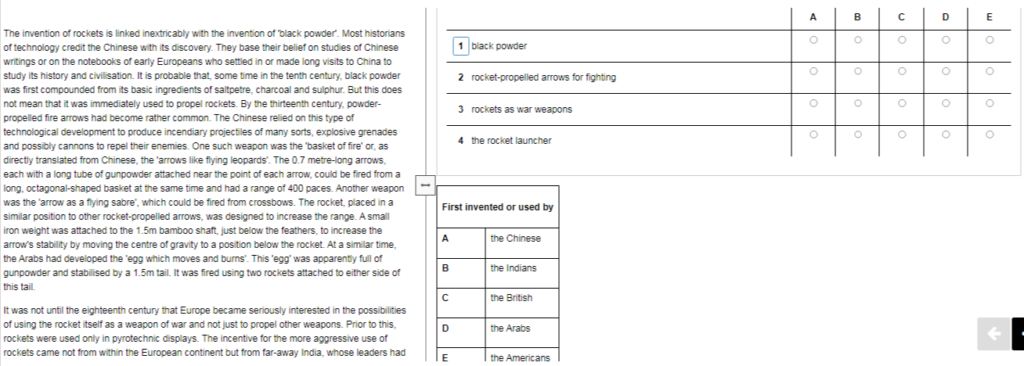
- Matching Sentence Endings: Participants complete the second half of a sentence based on information in the text, testing their understanding of the main ideas presented.
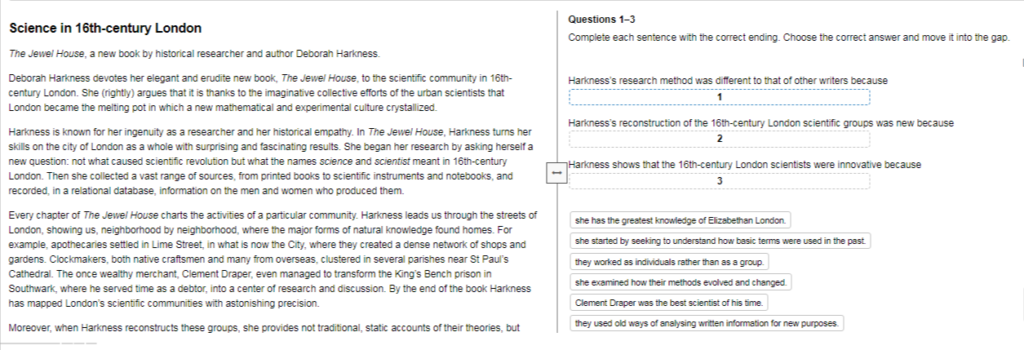
- Sentence Completion: Candidates fill in gaps in sentences by selecting words from the text, assessing their ability to locate specific information within the passage.

- Summary/Note/Table/Flow-chart Completion: Test-takers complete a summary using words from the text. Variations include selecting words to fill gaps or choosing from a provided list. This task evaluates comprehension of details and main ideas.

- Diagram Label Completion: Participants interpret a detailed description in the text and relate it to information presented in a diagram, testing their ability to understand and apply textual information.
- Short-Answer Questions: Test-takers answer questions about factual details in the text, assessing their ability to locate and comprehend specific information within the passage.
Academic Writing
Academic Writing This segment comprises two distinct writing tasks:
For Task 1, candidates are required to interpret visual information (such as a graph, table, chart, or diagram) in their own words. A minimum of 150 words should be written within a 20-minute timeframe.

Task 2 presents candidates with a specific point of view, argument, or problem to discuss. Participants must articulate their ideas coherently, supported by relevant examples or evidence, potentially drawn from personal experience. A minimum of 250 words is expected to be written within a 40-minute duration.

The assessment criteria for this section encompass:
- Coherence and Cohesion: The clarity and fluidity with which thoughts are expressed, as well as the organization of ideas and information.
- Lexical Resource: The breadth and accuracy of vocabulary used in the writing.
- Grammatical Range and Accuracy: The diversity and precision of grammatical structures employed, along with the correctness of language usage.
Candidates are advised to adopt an academic or semi-formal/neutral writing style throughout their responses.
Speaking
The speaking assessment entails an interactive interview between the test taker and the examiner. This phase evaluates:
- The fluency and coherence of the test taker’s speech.
- Their lexical resources.
- The range and accuracy of their grammar.
- Pronunciation proficiency.
The examination comprises three segments:
Part 1: This section delves into personal and familiar topics like home, family, studies, or interests. It gauges the test taker’s capability to express opinions and provide information on everyday matters and common experiences. Responses involve addressing a variety of questions.
Part 2: Test takers are presented with a prompt card prompting discussion on a specific topic. After one minute of preparation, they speak for up to two minutes and then field general questions about the topic. This section evaluates their ability to articulate thoughts coherently on a given subject, employing suitable language, and organizing ideas logically.
Part 3: In this phase, test takers respond to inquiries about the topic in greater depth. It assesses their proficiency in explaining opinions and analyzing, discussing, and speculating about issues. Part 3 typically spans 4 to 5 minutes.
IELTS General Training
The IELTS General Training examination is tailored for individuals seeking to relocate to an English-speaking country or pursue training or education below the degree level. It evaluates essential everyday English language skills required for effective communication in social settings and professional environments.
Comprising four sections—Listening, Reading, Writing, and Speaking—the IELTS General Training test shares similarities with the Academic version in the speaking and listening components. However, distinctions emerge in the reading and writing tests, catering to the unique language needs of candidates in varied contexts.
General Training Reading
This section comprises three parts, each progressively challenging:
- Part 1 texts address everyday topics pertinent to life in an English-speaking environment. These texts mirror the type of material encountered in daily life, such as announcements, advertisements, and timetables. Test takers must extract essential information from these texts.
- Part 2 texts center around work-related themes, including job descriptions, contracts, staff development, and training materials.
- Part 3 texts delve into subjects of general interest. Characterized by a descriptive and instructional writing style, these texts provide detailed information and guidance on various topics. They are longer and more intricate compared to those in Parts 1 and 2, sourced from newspapers, magazines, books, and online resources.
General Training Reading presents various question types, including multiple choice, identifying information (True/False/Not stated), identifying the author’s views/assertions (Yes/No/Not stated), comparing information, comparing headings, comparing features, comparing sentence endings, completing a summary, completing a note, completing a sentence, completing a table, completing a flowchart, completing a diagram label, and short answer questions.
General Training Writing
The writing component comprises two distinct tasks:
Task 1 requires you to address a given situation by composing a letter. This may involve requesting information or elucidating a scenario. You must write a minimum of 150 words within a 20-minute timeframe. The scenarios presented are commonplace, involving everyday situations such as writing to a friend (personal) or communicating with a manager (semi-formal or formal).
Task 2 presents you with a specific point of view, argument, or problem to explore. You are expected to produce a minimum of 250 words within 40 minutes. The topic may revolve around areas of general interest, such as children’s leisure time, environmental issues, or smoking in public places.
The writing section assesses:
- the effectiveness of your writing in accomplishing the purpose of the assignment;
- your ability to express needs, wants and concerns;
- the ability to construct an argument in response to the assignment, supporting it with evidence and examples, possibly from personal experience;
- consistency and coherence of your ideas and information;
- the breadth and accuracy of your use of vocabulary, as well as its appropriateness;
- the range and accuracy of grammatical structures.
Whether you need help with math, science, languages, or any other subject, our tutors are ready to help you on your academic journey. Don’t miss your chance to succeed – take a discounted trial lesson today!
IELTS Life Skills
IELTS Life Skills is a specialized English language proficiency test recognized by the UK government, primarily focusing on assessing speaking and listening skills. It is categorized as a Secure English Language Test (SELT), essential for certain visa applications, including Family, Spouse, Partner, Indefinite Leave to Remain, and Citizenship visas for the UK.
The test tasks revolve around everyday topics such as work, transportation, weather, shopping, and leisure activities, reflecting experiences in English-speaking environments.
Offering three proficiency levels aligned with the Common European Framework of Reference (CEFR), each level corresponds to specific visa application requirements:
IELTS Life Skills A1: Confirms the level of English language proficiency for family visa applications. Candidates must listen, respond and convey basic information, feelings and opinions on familiar topics in familiar situations.
IELTS Life Skills A2: Designed to demonstrate English language proficiency for a ‘family, spouse or partner’ visa in the UK. Candidates at this level should be able to listen, respond and communicate simple information, feelings and opinions on familiar topics. Tasks may include comparison, prioritization and persuasion, in addition to A1 level tasks.
The A2 level English language exam is only taken in the UK.
IELTS Life Skills B1: Designed to demonstrate English language proficiency when applying for citizenship or indefinite leave to remain. At this level, candidates are expected to listen, respond and communicate simple information, narratives and opinions with appropriate formality. Assignments may include demonstrations of contrast, narrative and expressions of certainty or future possibility, in addition to those at A1 and A2 levels.
IELTS test registration
- Find your nearest test center or visit the official IELTS website. You can also contact your local British Council or IDP Education office for help;
- Select your country and city;
- Select the type of test and how to take it;
- Check the available test dates that fit your schedule;
- Fill in the registration form: provide your full name, contact details, identity document number (passport or national ID card) and other required information;
- Upload your identity document;
- Pay the cost of the test. The cost may vary depending on your location and the type of test;
- Receive a confirmation email with important information such as the date, time and location of the test;
- Prepare for the test: study the official guide to ielts and ielts materials on the test website. Or trust eTalk to familiarize yourself with the test format, ielts exercises, sample questions and improve your English language skills in the relevant areas (listening, reading, writing and speaking).
Testing process
IELTS examinations are accessible year-round, offering test dates up to four times each month, contingent upon candidate demand. This means that there are a total of 48 opportunities annually to sit for the IELTS exam.
For candidates seeking flexibility in test-taking, there is the option to take the exam:
Online at Home
Currently, this option is exclusively available for the IELTS Academic exam. IELTS Online replicates the same questions and format as the traditional IELTS Academic test administered at physical exam centers. However, the notable difference lies in the speaking test, which is conducted remotely via video link with an appointed IELTS examiner. It’s worth mentioning that this online testing alternative is not recognized by governments or organizations for immigration or professional registration purposes.
Before proceeding with the online test, candidates must install the Inspera Exam Portal software, the designated platform for IELTS Online. Upon test booking, candidates receive an email containing a link to download the portal.
To successfully undertake the IELTS Online exam, candidates must ensure they have:
- dedicated desk in a quiet, private, and well-lit room;
- valid ID card;
- stable internet connection.
A computer or laptop with a single screen, equipped with: - Either Windows or macOS operating system;
- functioning webcam;
- microphone (note: headphones are not permitted);
- functional speakers.
During the test, note-taking with pen and paper is prohibited. However, you are permitted to take notes directly on the screen during the listening, reading, and writing sections. Additionally, you are allowed one 5-minute restroom break, which can be taken during the listening, reading, and writing tests.
Should you need to cancel your online IELTS test, it must be done at least 72 hours before the scheduled test date.
At the Computer Test Center
Questions for the Listening, Reading, and Writing sections are presented on-screen, and responses are inputted using the computer interface.
The Speaking section entails a face-to-face interaction with a certified IELTS examiner.
At the Paper test center
Test takers receive pens and question sheets containing queries for the Listening, Reading, and Writing sections.
The Speaking segment is conducted by a qualified IELTS examiner.
Irrespective of the chosen format—paper or computer—there are no disparities in the type of questions, content, duration, or scoring; divergence lies solely in the mode of response.
Upon arrival at the testing center, candidates must furnish proof of identity (passport or national ID card) used for registration. The only permissible items inside the testing room include the ID document, standard pens, pencils, erasers, and an unlabeled water bottle. All electronic devices and watches must be deposited in the designated area and switched off.
The duration of the IELTS General Training and IELTS Academic tests is 2 hours and 45 minutes, and the format remains consistent regardless of the test location. However, it’s important to note that while the speaking and listening tests are identical in both the Academic and General Training versions, the reading and writing tests vary in terms of question topics.
The breakdown of test timings and sections is as follows:
- Listening: 30 minutes (with an additional 10 minutes for transferring answers to the answer sheet). This section comprises 4 parts and 40 questions. Recordings are played only once.
- Reading: Allocated 60 minutes (including translation time). There are 3 sections with a total text length ranging from 2150 to 2750 words, and 40 questions.
- Writing: 60 minutes in total (20 minutes for Task 1 and 40 minutes for Task 2).
- Speaking: Lasts 11-14 minutes and consists of 3 parts (Part 1: 4-5 minutes, Part 2: 3-4 minutes, Part 3: 4-5 minutes). The speaking test is recorded via video.
Candidates complete the Listening, Reading, and Writing sections within a single testing session, without breaks between segments. The Speaking test may be conducted on the same day as other sections or within the week preceding or following the main test day, with prior notification.
Accuracy in spelling and grammar is crucial when recording answers on the answer sheet, as incorrect responses may result in point deductions.
In the IELTS Life Skills examination, you will be paired with an examiner and another individual, whose responses will not influence your score.
The duration of each level is as follows:
- IELTS Life Skills A1: 16-18 minutes
- IELTS Life Skills A2: 20 minutes
- IELTS Life Skills B1: 22 minutes
These tests encompass two primary sections. The initial segment involves discussing and responding to inquiries on familiar subjects. Subsequently, the second segment combines listening and speaking tasks. Throughout the assessment, you will have the opportunity to take notes periodically to aid in preparing your responses.
It’s important to note that IELTS is not recommended for individuals under the age of 16.
Test results
IELTS outcomes garner recognition from over 12,000 establishments globally, spanning educational institutions, employers, immigration bodies, and professional associations.
Typically, results are dispensed by centers within 13 days for paper-based IELTS and 3-5 days for computer-based variants. Online test results are typically accessible within 6-8 days.
Every examination undergoes evaluation by proficient IELTS examiners.
Valid for a duration of two years from the issuance date, IELTS test reports are transmitted solely to the organizations stipulated by the candidate during the application process or upon the candidate’s explicit request post-results.
The Total Score represents the mean of the group’s scores across the four sections, rounded to the nearest half of the range. Generally, the Total Score for an IELTS examination ranges from 0 to 9:
Listening: Each correct answer garners 1 point. Scores ranging from 0 to 40 are converted to a 9-point IELTS scale:
- Band Score 5: 16 points
- Band Score 6: 23 points
- Band Score 7: 30 points
- Band Score 8: 35 points
Reading: Similarly, each correct response merits 1 point. Scores out of 40 points are transformed to the IELTS 9-point scale:
Academic:
- Band Score 5: 15 points
- Band Score 6: 23 points
- Band Score 7: 30 points
- Band Score 8: 35 points
General Training:
- Band Score 4: 15 points
- Band Score 5: 23 points
- Band Score 6: 30 points
- Band Score 7: 35 points
Writing: Task 2 holds twice the weightage of Task 1 in determining the writing score. The written segment of the IELTS assessment is evaluated based on four primary criteria: Task completion, coherence and cohesion, lexical resource, and grammatical range and accuracy. Each criterion receives an individual score on a scale from 0 to 9, which is then averaged to derive a total score for the Writing component.
The Speaking section is assessed on four main criteria: Fluency and coherence, Vocabulary, Grammatical range and accuracy, and Pronunciation. Based on these criteria, they assign the Speaking section a score ranging from 0 to 9 points. The scores for each criterion are then averaged to determine a total score for the Speaking section.
A score of 7.0 or above on the IELTS exam is considered satisfactory.
Unlike normal exams, IELTS Life Skills does not use a grading system. Instead, your performance in the exam determines whether you get a Pass or Fail result. A Pass means you successfully pass the test, allowing you to continue with your visa application, while a Fail means you failed, rendering the test invalid for your application.
IELTS Life Skills test results are usually available about seven days after the test.
IELTS test cost
The cost of the IELTS test is not fixed and varies depending on the country and city where you choose to take the test. The fees remain consistent for both Academic and General Training tests.
For Academic and General Training tests, the fee typically ranges from approximately $215 to $310, contingent upon the location. For instance, in Canada, the IELTS test fee ranges from $309 to $335, while in Australia, it is $445.
For IELTS tests required for visas and immigration to the UK, the fee is $295.
For IELTS Life Skills, the fee is $195.
The fee for retaking the IELTS test falls between $165 and $290.
Refunds: You have the option to cancel or reschedule your test date, but refunds or transfers are only permitted if you take this action at least five weeks before the test date.
If you cancel or reschedule your test date five weeks before your scheduled IELTS test, you may receive a refund, albeit with a 25% administration fee deducted.
Up to five copies of your TRF will be electronically sent free of charge to the institutions specified on your IELTS application.
Payment Methods:
Net banking/credit or debit cards
Bank Deposit
Demand Draft
Supplementary Details
The IELTS One Skill Retake program provides a valuable opportunity for those who feel they could have done better and allows candidates to retake any section of the test: listening, reading, writing or speaking.
To participate in the IELTS One Skill Retake program, candidates must do so within 60 days of the initial test date. Results usually arrive within 3-5 days, ensuring promptness.
The format and timing of the IELTS One Skill Retake is the same as the format and timing of the full test, which helps to maintain consistency. However, candidates save time by focusing only on the specific skill they want to improve, avoiding the need to retake all four sections. This program is designed for both the academic and general IELTS test, allowing it to cater for a wide range of candidates.
It is important to note that the One Skill retake option is not currently available for IELTS Online.
To take the One Skill Retake, you must take the original test at an exam center.


